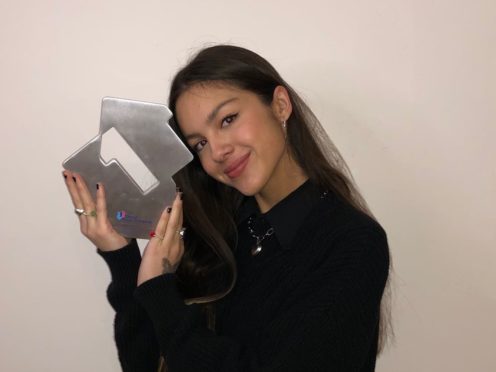Female acts are enjoying their strongest showing at the top of the official UK singles chart for more than 10 years, new analysis reveals.
Songs performed either by solo female artists or exclusively female line-ups have topped the chart in 21 of the last 52 weeks.
This is the highest proportion (40%) in any 52-week period since November 2009.
It represents a major turnaround in the gender balance of UK number one hits, from a low point in autumn 2018 that saw all-female acts claim the top spot in only one of the previous 52 weeks.
The analysis, by the PA news agency, shows that the resurgence of women chart-toppers in the past year has been driven by a mixture of old and new stars.

Current number one Olivia Rodrigo has now held the top spot for eight consecutive weeks with her song Drivers License.
Ariana Grande had a six-week spell at number one in late 2020 with Positions, plus a week at the top in June with her duet with Lady Gaga, Rain On Me.
Completing the tally of 21 weeks of all-female chart-toppers in the past 52 weeks is Cardi B featuring Megan Thee Stallion (three weeks); Little Mix (one week); and Mariah Carey, who held the top spot two weeks in December with her 1994 festive favourite All I Want For Christmas Is You.
The current strong run of exclusively-female UK number ones is a far cry from the week ending September 13 2018, when they accounted for just one of the previous 52 weeks of chart-toppers: Jess Glynne and her song I’ll Be There.
When calculating the figures for all-female number ones, the PA did not include songs performed by combinations of male and female artists, including mixed groups and ensembles.
Responding to the findings, Emma Banks, founding agent of the Creative Artists Agency, told the PA news agency: “I have never seen a time where women artists have been so empowered to create their music.
“It is fantastic they are now getting the recognition that they have deserved and to see this reflected in the charts.
“The recent triumph of the women in the charts had largely been driven by well-established artists, but over the past year myself and my team have signed so many young women who are spectacularly talented and this gives me real hope for the continued growth of female talent in our industry.”

The last time all-female acts topped the chart for 21 weeks out of 52 was in the week ending November 21 2009.
Female artists responsible for those 21 weeks were Lily Allen, Beyonce, Alexandra Burke, Kelly Clarkson, Cheryl Cole, Lady Gaga, Leona Lewis and Pixie Lott.
In the first few years of the 2010s, the likes of Adele, Katy Perry, Ellie Goudling and Little Mix ensured all-female acts periodically claimed the top spot – though rarely for more than around a third of weeks in any 52-week period.
But long spells at number one in the years 2015-18 for male solo stars such as Justin Bieber, Ed Sheeran, Drake and Lewis Capaldi tilted the balance further away from female artists.
Since the start of the 21st century, there have been only a tiny number of occasions – all during the spring and summer of 2009 – when all-female acts topped the charts for more than half of the previous 52 weeks.
If Olivia Rodrigo manages to continue her current run at number one, or is succeeded by other all-female acts in the next few months, this feat might be repeated in the near future.
Lucy Spraggan, currently at number five in the official UK album chart, told the PA: “I am absolutely thrilled to be joining such an empowered list of women in the music industry at the moment. Olivia Rodrigo’s Driver’s Licence is an incredible song that deserves to be there.
“I’m not going to lie, it’s a tough industry for women, but there have been some spectacular glimmers of hope recently.
“I would love to see festivals start to properly level out the amount of not just female headline acts they have, but across the whole bill. We’ve been trying to research this week, but it seems I am the only solo UK lesbian to have top 10 albums since 2003.
“You don’t see many women, so in turn, you don’t see many lesbians. I notice the lack of both every day.”
